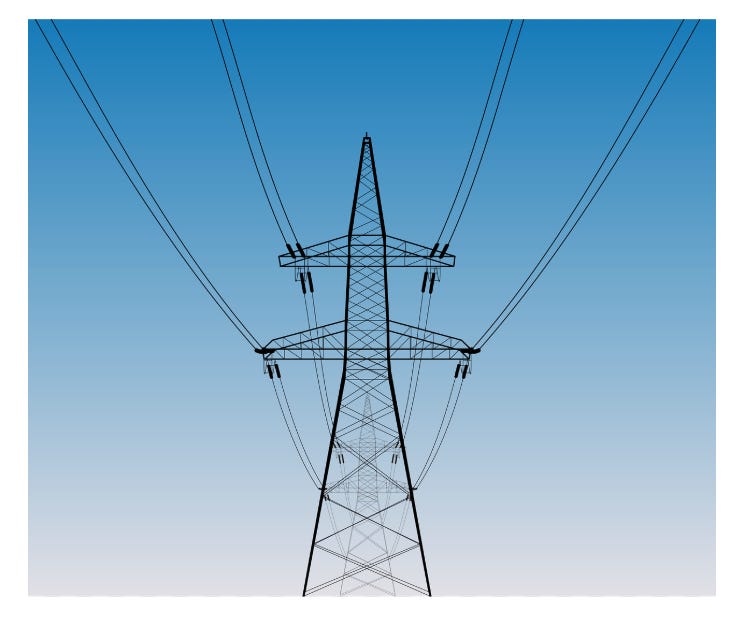Vermont's Focus on Energy and Climate Initiatives Comes At a Cost: Your Rising Utility Bill
Across the nation, many states are grappling with increasing utility costs, with a significant factor in this rise being the burgeoning energy demands of artificial intelligence (AI) and the massive data centers that power it. However, according to recent reports, while Vermont residents are also seeing their electricity bills climb, the reasons behind these increases lie in a distinct set of local and regional pressures, rather than a surge in data center energy consumption.
National Trend: AI and Data Centers Drive Up Utility Costs
In numerous states, a sharp increase in electricity demand, largely attributed to the rapid expansion of giant data centers supporting AI technologies, is putting a strain on power grids and leading to higher utility rates. According to industry analysis, data centers consumed an estimated 4.4% of all electricity in the United States in 2023, and this figure is projected to grow significantly in the coming years. Reports indicate that the energy demands of AI-powered searches and the specialized hardware required are far greater than traditional internet usage, leading to an "unprecedented load growth" that has caught utilities by surprise.
States with high concentrations of these energy-intensive facilities, such as Virginia, Texas, and Ohio, are seeing a direct link between data center development and rising costs. According to a Virginia state agency, residential electricity bills could rise substantially by 2030 due to data center expansion. Similarly, in Ohio, reports suggest that a portion of recent utility bill increases can be directly attributed to the costs of serving new data centers. This has led to a situation where tech giants are increasingly influencing energy markets, building their own power plants and engaging in regulatory processes.
Vermont: A Different Energy Landscape
In contrast to this national trend, Vermont's data center market is minimal. According to various industry reports, the state hosts only a handful of small commercial data centers, with the largest consuming a fraction of the power needed by a single hyperscale AI facility. The appeal of Vermont as a data center location, according to marketing materials, centers on its sustainability efforts, renewable energy access, and low risk of natural disasters, rather than catering to the massive energy demands of AI and cloud computing giants.
According to the Vermont Electric Power Company (VELCO), the state's transmission utility, long-range load forecasts show "unprecedented load growth," but this is primarily attributed to the anticipated widespread adoption of electric vehicles (EVs) and cold-climate heat pumps, not data centers. Official planning documents make no mention of data centers as a significant driver of future energy demand in Vermont.
The Anatomy of Vermont's Utility Rate Hikes
According to analysis of regulatory filings and long-range plans, the rising cost of electricity in Vermont is due to a combination of factors:
The Regional Grid Factor
Vermont's integration into the New England power grid, managed by ISO New England, means that the state's utilities and customers share in the costs of maintaining and upgrading the regional transmission network and purchasing wholesale electricity. According to recent rate filings from Vermont Electric Cooperative (VEC) and Green Mountain Power (GMP), increasing "Transmission Costs" associated with regional infrastructure projects are a significant driver of recent and projected rate increases. VEC, for instance, stated that these regional costs accounted for a substantial portion of their 2025 rate request.
The Cost of Climate Action
Vermont has set ambitious goals for electrification and decarbonization, including a mandate for 100% renewable electricity by 2035 under its updated Renewable Energy Standard (RES). While these policies aim for long-term environmental and energy independence benefits, they require significant upfront investments in grid modernization and new renewable energy generation. According to various analyses, the costs associated with meeting the new RES requirements are expected to lead to further rate increases for Vermont consumers in the coming years.
Rising Operational Expenses
Like businesses across all sectors, Vermont's utilities are facing increased costs for materials, labor, insurance, and local property taxes. According to VEC's recent rate filings, significant increases in property taxes and employee health insurance premiums, along with general inflationary pressures, are contributing to the need for higher rates.
The Impact of Climate Change
The increasing frequency and severity of extreme weather events are also taking a financial toll on Vermont's utilities. According to VEC, the costs associated with "Storm Recovery" have been increasing significantly in recent years due to more frequent and intense storms. These expenses for power restoration and investments in grid hardening are becoming a notable factor in utility rate adjustments.
What the Future Holds: Rate Projections for Vermont
According to the Vermont Public Service Department (PSD), statewide electricity rates are projected to increase by approximately 25% by 2030. This steady rise is expected to continue as the state invests in renewable energy infrastructure and adapts to the evolving energy landscape.
The actual trajectory of rates will depend on factors such as the final costs of Renewable Energy Standard compliance, the volatility of regional energy markets (particularly natural gas prices), and the effectiveness of load management strategies aimed at optimizing electricity use. According to VELCO's long-range plan, these strategies will be crucial in mitigating the need for costly transmission upgrades.
Conclusion: A Deliberate Path Forward
While Vermonters will continue to see their utility bills rise, it is crucial to understand that the driving forces are distinct from those in states experiencing a data center boom. Vermont's increasing energy costs are primarily a reflection of its commitment to a clean energy transition, its participation in the regional power grid, and the growing challenges of climate change. The investments being made today are intended to build a more resilient and sustainable energy future for the state, even if they come with immediate financial implications for consumers. The coming years will test whether this deliberate path towards energy independence and decarbonization can ultimately provide long-term cost stability for Vermonters.




